Solar Radiation Management (SRM): Can we slow down global warming?
8 minute read
Updated on: 24 Jul 2021

What happens if we can’t sort out greenhouse gases in the atmosphere? Is there anything else we could do to reduce global warming?
Well, some people suggest we could try Solar Radiation Management (SRM). The idea is to slow down global warming by reflecting some of the sun’s radiation back into space before it can warm the Earth .
How does SRM work?
The Earth is constantly receiving energy from the sun in the form of radiation.
If you’ve read our Causes course, you might remember that actually, all three happen! A small percentage of radiation is absorbed by the atmosphere, but most heads straight to the Earth’s surface. Some of this is reflected (e.g. by clouds and mountains), but about two-thirds is absorbed by the Earth’s surface, causing the planet to heat up .
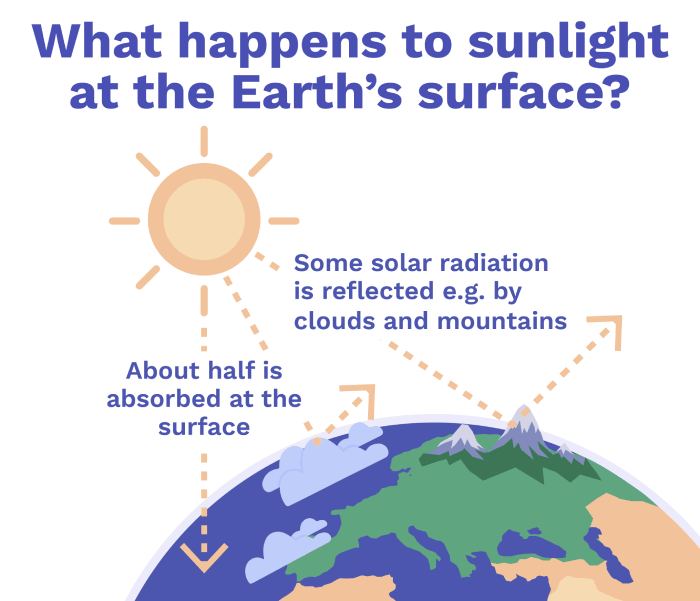
Reflection and absorption of solar radiation
The energy that the Earth absorbs is re-emitted as longer-wavelength radiation, which is more easily absorbed by greenhouse gases in our atmosphere. These gases re-radiate the radiation out in all directions, causing the Earth to warm up further
.
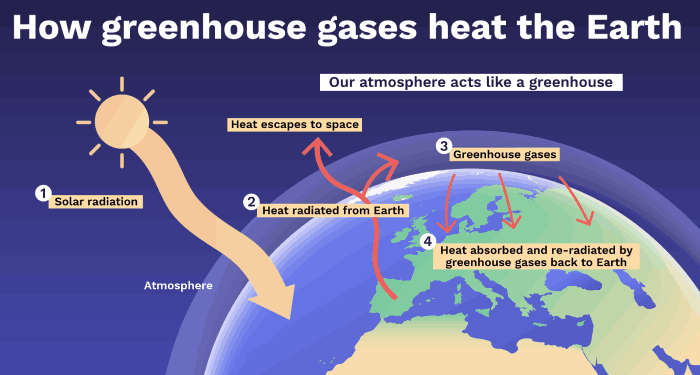
The Greenhouse Effect
Solar Radiation Management aims to cool the Earth by artificially reflecting more of the Sun’s energy into space . There are different ways of doing this either on the ground, in the atmosphere, or out in space.
Surface-based techniques
SRM on the ground involves brightening the Earth’s surface so it reflects more solar radiation .
These include painting surfaces white to maximise their reflectiveness . Human-made surfaces like roofs and pavements can be painted in this way
. It comes with the added benefit of reducing the need for air conditioning (by keeping the buildings cool), although it would be expensive at scale
.
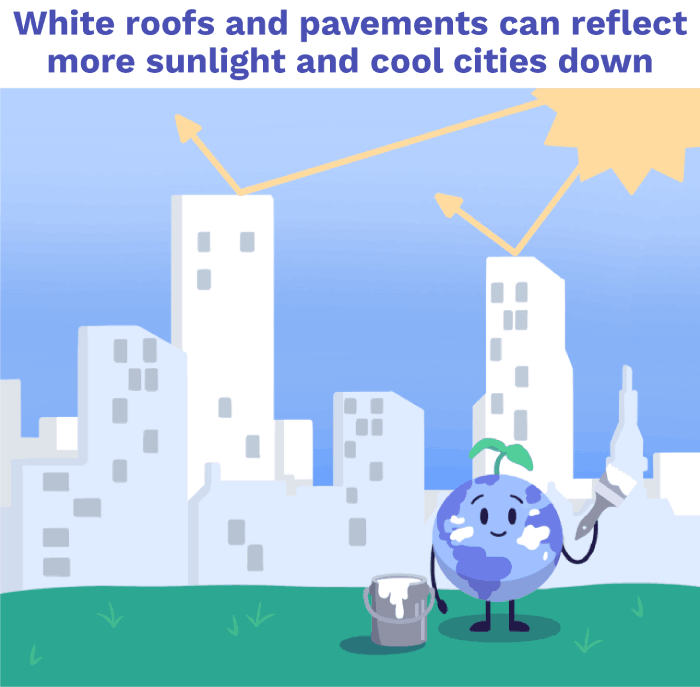
Surface-based SRM
Another suggestion is to add highly reflective coverings across large areas of desert . However, this would cost trillions of dollars every year and could disrupt weather patterns and wildlife, making it an unlikely candidate for SRM
.
Atmosphere-based techniques
SRM in the atmosphere works by increasing its reflectivity so that light is scattered before it reaches the Earth’s surface .
Light-scattering particles would be fired into clouds using high-altitude aeroplanes , balloons, or blimps
!
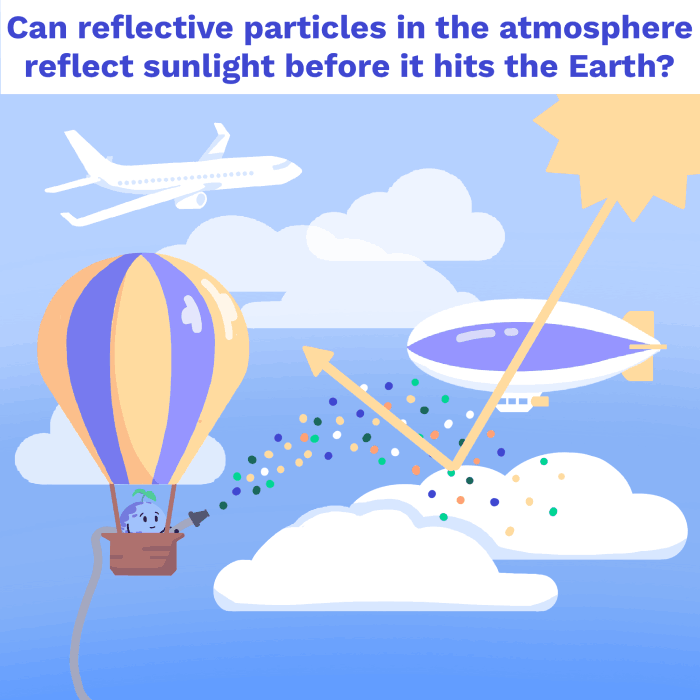
Atmospheric SRM
Another method being trialled is marine cloud brightening, which sprays seawater droplets into clouds to increase their reflectivity . Compared to the larger water droplets that usually form clouds, these tiny droplets scatter light more effectively
. This would have more localised effects (rather than the global effects of stratospheric aerosols)
.
These techniques require appropriate methods of creating very fine particles and distributing them at the appropriate height, for example, by using specialised aircraft . Whilst not technically challenging, it would need to be done on a vast scale to have a significant cooling effect
.
What’s more, some types of stratospheric aerosol injection could have long-lasting health consequences; a lot of atmospheric SRM research involves using sulfur-containing compounds, which can produce sulfuric acid . This can deplete the ozone layer
.
What are some of the practical issues?
Even though certain SRM methods, such as sulfate aerosols, have the potential to be rapidly implemented from a technical standpoint, it could take decades for SRM testing and experimentation to obtain accurate estimates of how the climate will respond .
Some have even argued that it is impossible to make accurate predictions of the impacts of stratospheric SRM using small-scale tests; the climate is a global phenomenon and, therefore, we would only see the real effects of SRM when trialled at a worldwide scale .
Space-based techniques
SRM in space would enable us to scatter light away from Earth before it even crosses into the atmosphere (maybe using giant space mirrors!) .
Unfortunately, such technologies are widely seen as highly impractical and overly expensive . The large practical difficulties
and unknown risks to satellites currently in orbit
make space-based solutions unrealistic.
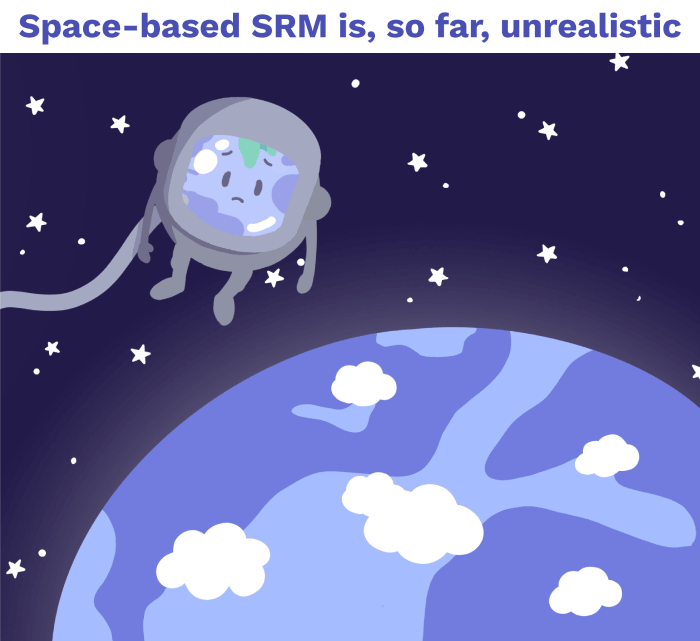
Space-based SRM
What are the issues around solar radiation management?
Although effective SRM could theoretically delay the disastrous effects of global warming , the best solution to the climate crisis is to reduce greenhouse gas emissions and remove some of the CO₂ that is already in the atmosphere
. Therefore, scientists don’t want to focus on SRM solutions, as they could distract politicians away from reducing CO₂ emissions
.
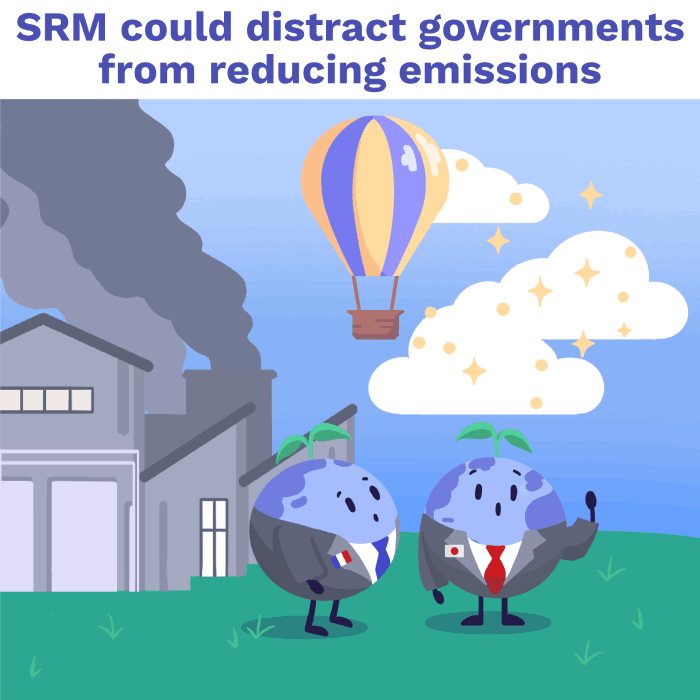
Is SRM just a distraction?
SRM would also not protect the planet from other effects of greenhouse gases, such as ocean acidification , air pollution and the diseases this causes
.
Even if we could successfully use SRM, there would always be a risk that it might suddenly stop working, leading to rapid global warming . This could happen if international cooperation broke down or if there was some technological failure
. Overall, we can only solve the warming risk by reducing greenhouse gas emissions
.
What are some of the political and social issues?
Whilst we can estimate the global impacts of SRM, it’s much more difficult to model the regional impacts . There is huge uncertainty around what the impacts of SRM would be for different communities
.
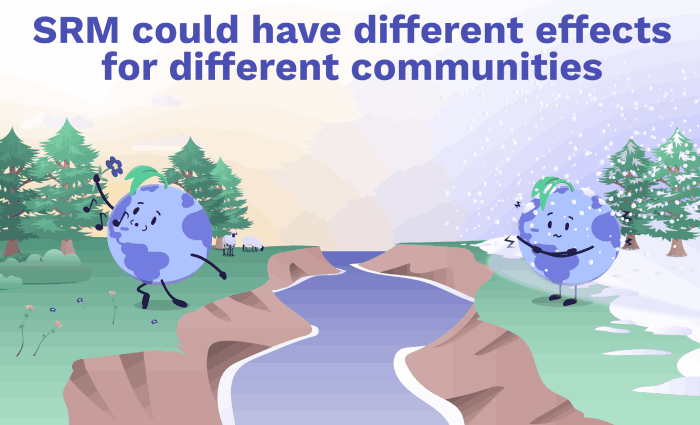
It is hard to model the regional impacts of SRM
What’s more, SRM will have the biggest impact where the sun’s energy is at its greatest - in the tropics . Global warming, by contrast, happens much more evenly around the planet. This means that there would be a different regional distribution of heating and cooling, which could significantly affect the water cycle (see the Climate Predictions course for why this matters)
.
Current SRM research is carried out almost entirely by a small group of researchers in high-income countries . This risks effects on lower-income countries and communities being overlooked
.
Conclusions
Solar radiation management comes with many unknown dangers, but are these really more serious than the dangers of climate change ? It’s hard to know, and supporters of SRM argue that more research needs to be done to answer this question
. However, SRM must not distract from emissions reduction and carbon removal, which are needed to find long-term solutions to the climate crisis.